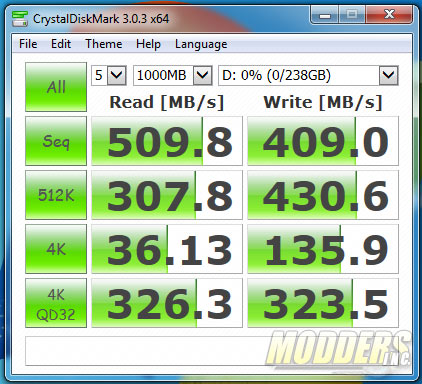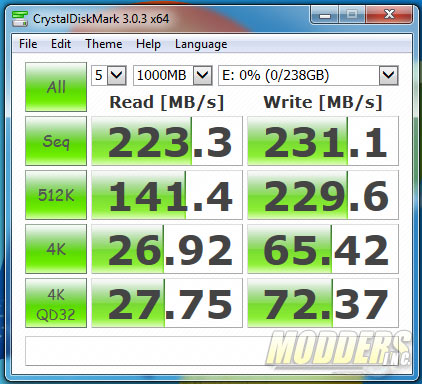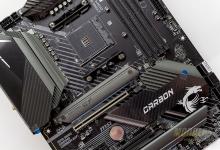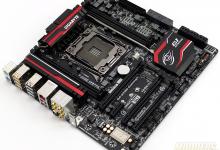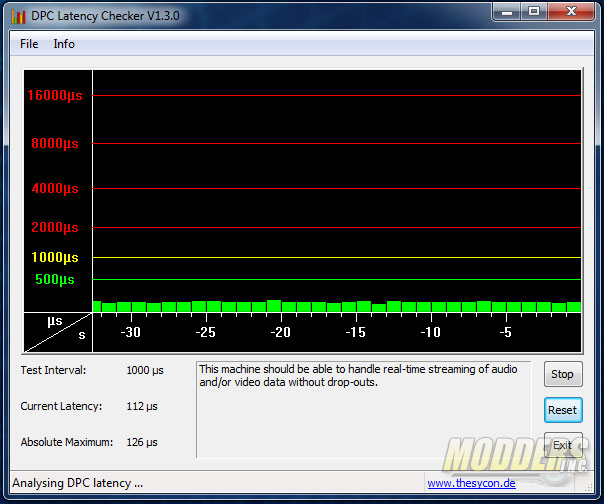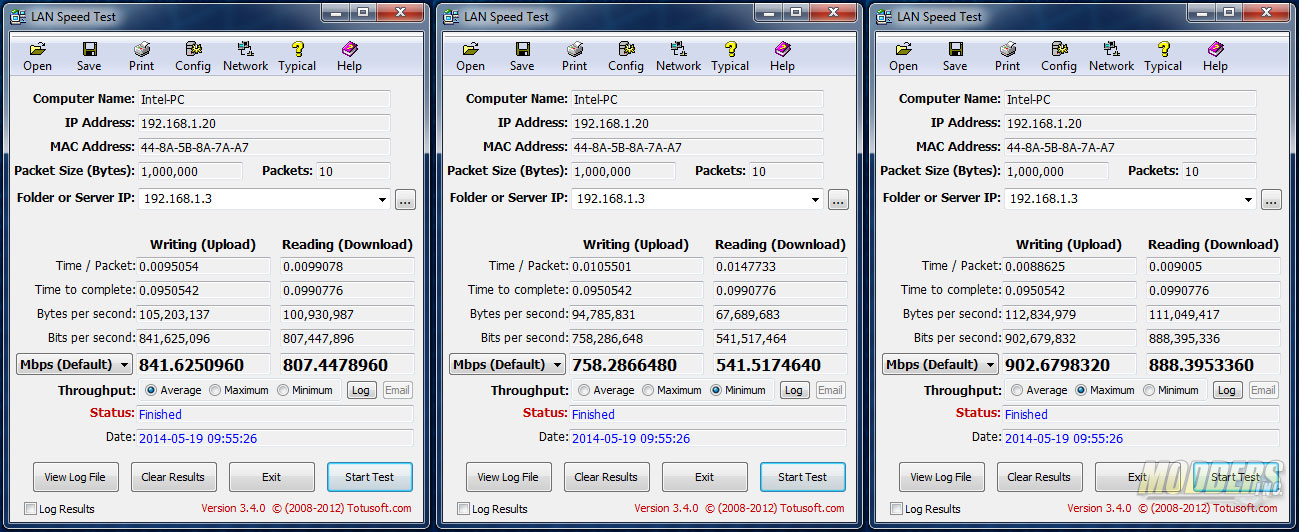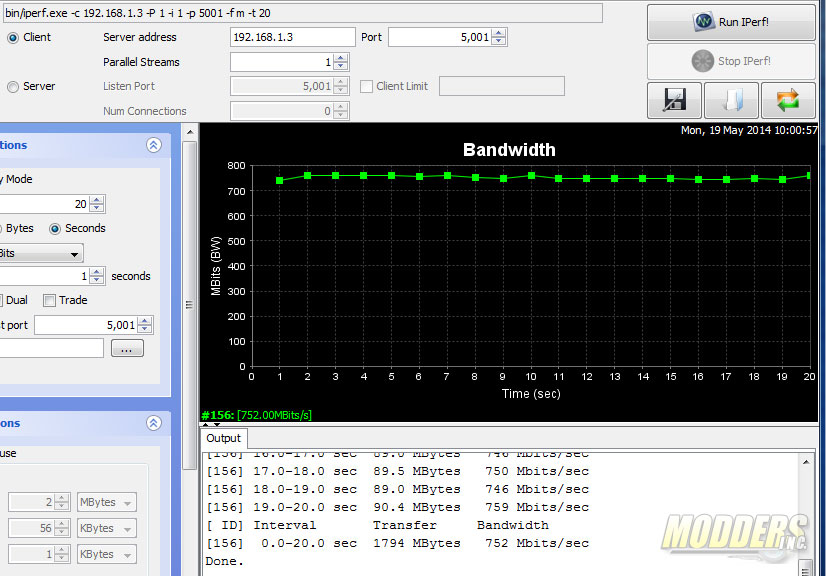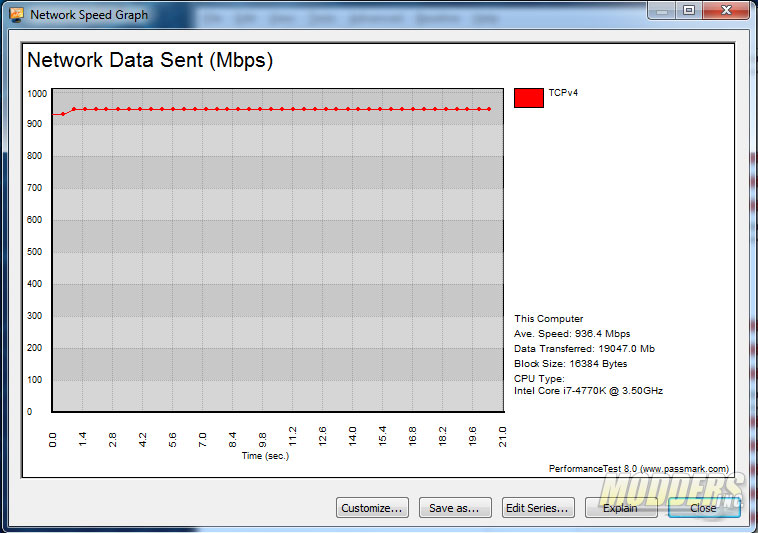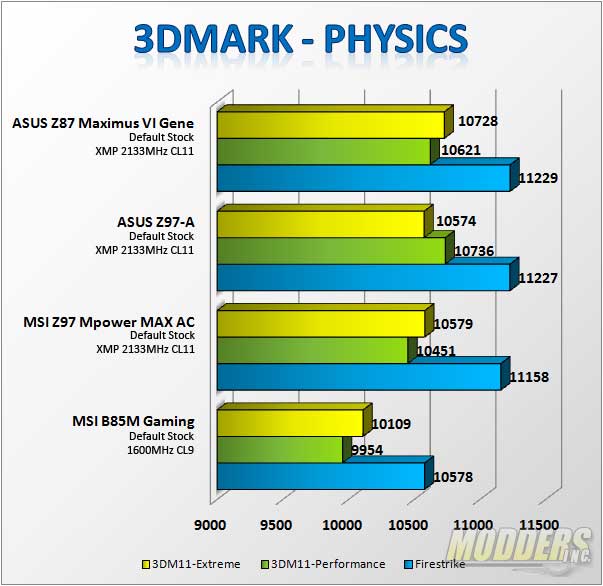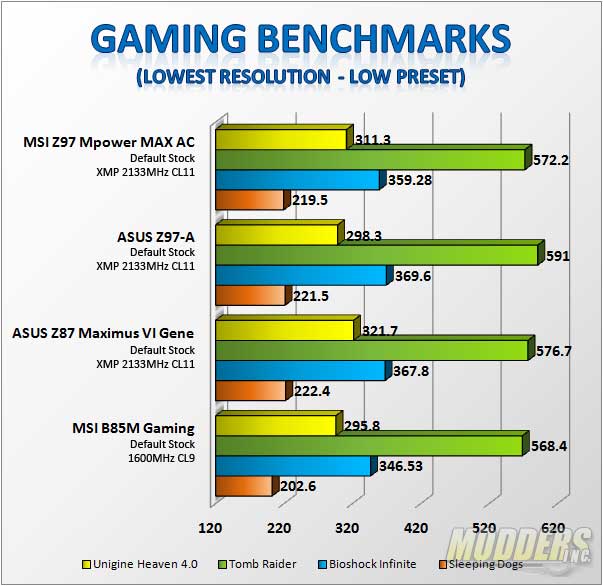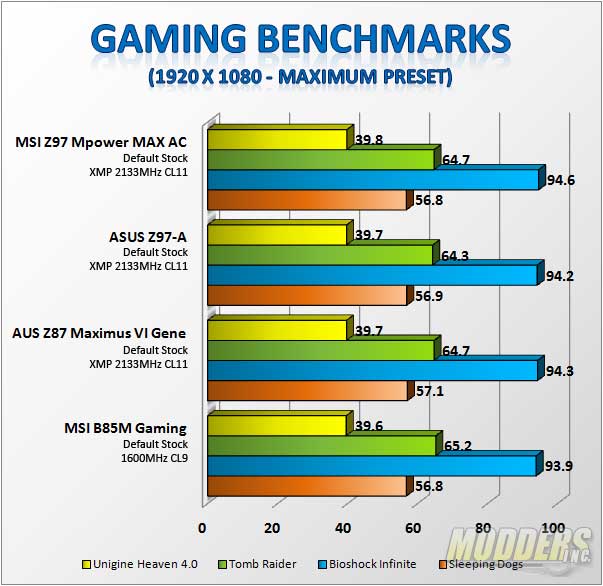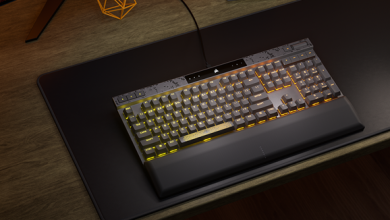MSI B85M Gaming Motherboard Review
Subsystem Testing
All SATA3 connections on the MSI B85M Gaming are provided by the Intel B85 chipset and shows extremely good performance. I don’t always get higher than 500MB sequential reads even on high-end Z97 motherboards.
USB 3.0 ports are also natively provided by the Intel B85 chipset, performing up to par with other 8-series Intel USB 3.0 implementations.
On-board Audio
Before proceeding with audio benchmarks, Deferred Procedure Call latency must be first checked to make sure that the system is capable of producing useable results when the Rightmark Audio Analyzer benchmark was run. DPC is a Windows function that involves prioritizing tasks within the OS and high DPC latencies can be caused by several things including hardware device conflict. The DPC checker graphically displays the latency level of the system in real time so as long as the bars are in the green, the system should be able to handle audio and video streaming without drop outs or stutters.
Absolute maximum peaked at 126 while the system for the most part stayed slightly below that, so now we can run RightMark Audio Analyzer tests:
| 24-bit, 96 kHz | ||
| Frequency response (from 40 Hz to 15 kHz), dB |
+0.29, +0.18
|
Excellent
|
| Noise level, dB (A) |
-104.5
|
Excellent
|
| Dynamic range, dB (A) |
104.4
|
Excellent
|
| THD, % |
0.0096
|
Very good
|
| THD + Noise, dB (A) |
-77.9
|
Average
|
| IMD + Noise, % |
0.010
|
Very good
|
| Stereo crosstalk, dB |
-96.6
|
Excellent
|
| IMD at 10 kHz, % |
0.021
|
Good
|
| General performance |
Very good
|
|
| 24-bit, 192 kHz | ||
| Frequency response (from 40 Hz to 15 kHz), dB |
+0.28, +0.12
|
Very good
|
| Noise level, dB (A) |
-104.3
|
Excellent
|
| Dynamic range, dB (A) |
104.2
|
Excellent
|
| THD, % |
0.0098
|
Very good
|
| THD + Noise, dB (A) |
-77.8
|
Average
|
| IMD + Noise, % |
0.010
|
Very good
|
| Stereo crosstalk, dB |
-96.3
|
Excellent
|
| IMD at 10 kHz, % |
0.020
|
Very good
|
| General performance |
Very good
|
|
Both 96KHz and 192KHz tests showed very good performance, typical of Realtek ALC1150 codec implementation. Dynamic range actually reached 104dB on both 192 and 96kHz.
Network Connectivity
Network testing was conducted with a 4-port Cisco E3200 Gigabit Dual-Band Wireless N router and a pair of 10-ft long Cat5E cables connecting the server PC and the test motherboard. The server system is running an Intel Core i7-3960X processor on an ASUS P9X79 WS motherboard with an Intel 82574L Gigabit LAN Controller. Interrupt Moderation was disabled.
Network performance is excellent and CPU usage only peaked at 3%, much better compared to other Realtek Gigabit network solutions which could be as high as 12% on load. It is not as CPU efficient as Intel Gigabit solutions but the benchmark result numbers show very good performance with very high minimum speeds.
Gaming Tests
Futuremark’s 3DMark is a semi-synthetic gaming benchmark that calculates both graphics and CPU-bound physics in a controlled series of tests and provides scores that can be compared with other gaming platforms. The advantage of faster RAM is apparent in this case.
Thankfully, fewer and fewer games are heavily CPU dependent and we can see that the difference is minimal here with some of the latest DX11 games. The difference is also significantly minimal at real world maximum settings at 1920 x 1080.
